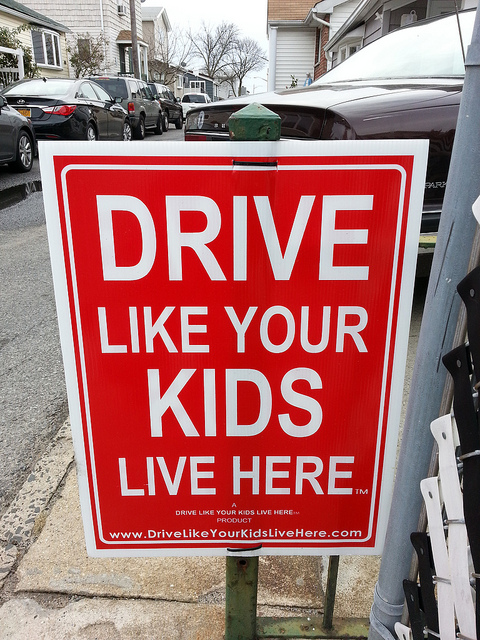When should you use behavioral science to make pedestrians safer, and when should you use pavement?
How does city design trick us into being better—or worse—citizens?
It’s a question as old as urban design itself, and you’ve probably thought about it before, even if you don’t yet realize it. After all, if you’ve ever driven down a long, straight, distant-horizon highway—or even a stroad in the middle of town—you know how easy it is to zone out and start speeding, until you veer out of your lane and suddenly feel the vibration of the rumble strip under your wheels. On the contrary, if you’re driving on a narrow street in a cute Italian village with kids playing and elderly pedestrians crossing every few feet, you’re probably going to be on high alert and slow way down. The subconscious signals that design sends us are often far more powerful than the big, black and white signs on the side of the road. This is why, if we want to make our streets safer for everyone, we really should be focusing on lowering the perceived speed limit rather than just dialing down the posted speed limit.
“People don’t change faulty behaviour despite awareness, as humans are not rational beings,” says Biju Dominic, co-founder of the behavioral architecture firm Final Mile, in a recent BBC article. And local governments are starting to take even more notice of their citizens’ irrationality, implementing “nudge units” to embed subtle subconscious cues into their built environment.
“Nudges” are often cheap and easily implemented: renaming an “expressway” to a “road” might be all it takes to make drivers slow down a couple miles an hour, and painting parallel lines on a street that’s prone to induce speeding has been proven to make drivers step on the brakes.
These signs are a common U.S. response to speeders, using an emotional appeal to drivers to slow down. What if we used actual infrastructure to narrow the travel lanes and induce drivers to go more slowly? (Source: Matt Green via Flickr.)
But some of the BBC’s examples are a reminder of the ways in which cities might use nudging when actual infrastructure is really what we need. Authorities observing one Mumbai train station, for instance, noticed that people far too frequently attempted to cross the tracks and died—and answered this feedback by putting up a grotesque billboard nearby that depicted a man about to be struck by a train. Even without knowing the particulars of the train station’s design, it seems odd that the local government chose this as their first-increment response to solving this problem. The billboard might have been a nudge to get pedestrians to change their behavior, but a low-cost infrastructure solution could have actually given them a safe place to walk. After all, there must be some reason why pedestrians are crossing those tracks. Had the city officials asked themselves why, rather than trying to “nudge” pedestrians into behaving in the “right” way, they might be able to lower fatality rates even more.
Here at Strong Towns, we encourage local governments to listen to citizens and closely observe how they behave in their built environments, and make plans in response to this data rather than imposing top-down solutions to the problems they think citizens have without even asking them. Design that provides a little psychological nudge can be a great, inexpensive way to solve problems like pedestrian fatalities. But we should be careful about deploying design tweaks against pedestrians' observed inclinations, when the real problem is the design of the built environment itself. After all, we have a million low cost, easily reversible methods we can use to nudge drivers to better behavior first.

